 W
WThe Herodian dynasty was a royal dynasty of Idumaean (Edomite) descent, ruling the Herodian Kingdom and later the Herodian Tetrarchy, as a vassal state of the Roman Empire. The Herodian dynasty began with Herod the Great, who assumed the throne of Judea, with Roman support, bringing down the century long Hasmonean Kingdom. His kingdom lasted until his death in 4 BCE, when it was divided between his sons as a Tetrarchy, which lasted for about 10 years. Most of those tetrarchies, including Judea proper, were incorporated into Judaea Province from 6 CE, though limited Herodian de facto kingship continued until Agrippa I's death in 44 CE and nominal title of kingship continued until 92 CE, when the last Herodian monarch, Agrippa II, died and Rome assumed full power over his de jure domain.
 W
WThe Herodian Kingdom of Judea was a client state of the Roman Republic from 37 BCE, when Herod the Great was appointed "King of the Jews" by the Roman Senate. When Herod died in 4 BCE, the kingdom was divided among his sons into the Herodian Tetrarchy.
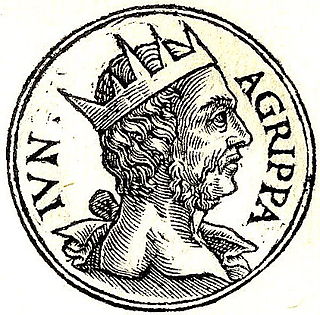 W
WHerod Agrippa II, officially named Marcus Julius Agrippa and sometimes shortened to Agrippa, was the eighth and last ruler from the Herodian dynasty. He was the fifth member of this dynasty to bear the title of king, but he reigned over territories outside of Judea only as a Roman client. Agrippa was overthrown by his Jewish subjects in 66 and supported the Roman side in the First Jewish–Roman War.
 W
WHerod Antipas, was a 1st-century ruler of Galilee and Perea, who bore the title of tetrarch and is referred to as both "Herod the Tetrarch" and "King Herod" in the New Testament, although he never held the title of king. He is widely known today for accounts in the New Testament of his role in events that led to the executions of John the Baptist and Jesus of Nazareth.
 W
WHerod Archelaus was ethnarch of Samaria, Judea, and Idumea, including the cities Caesarea and Jaffa, for a period of nine years. Archelaus was removed by Roman Emperor Augustus when Judaea province was formed under direct Roman rule, at the time of the Census of Quirinius. He was the son of Herod the Great and Malthace the Samaritan, and was the brother of Herod Antipas, and the half-brother of Herod II. Archelaus came to power after the death of his father Herod the Great in 4 BC, and ruled over one-half of the territorial dominion of his father.
 W
WAristobulus V of Chalcis was a son of Herod of Chalcis and his first wife Mariamne. Herod of Chalcis, ruler of Chalcis in Iturea, was a grandson of Herod the Great through his father, Aristobulus IV. Mariamne was a granddaughter of Herod the Great through her mother, Olympias; hence Aristobulus was a great-grandson of Herod the Great on both sides of his family.
 W
WDrusilla was a daughter of Herod Agrippa, King of Judaea and sister to Berenice, Mariamne and Herod Agrippa II. Her son, Agrippa, was one of the only people who were known by name, who died in the Vesuvius eruption.
 W
WGlaphyra was an Anatolian princess from Cappadocia, and a Queen of Mauretania by her second marriage to King Juba II of Mauretania. She was related to the Herodian Dynasty by her first and third marriage, to Alexander, son of Herod and Herod Archelaus respectively.
 W
WHerod Agrippa, also known as Herod II or Agrippa I, was a King of Judea from AD 41 to 44 and of Philip's tetrarchy from 39. He was the last ruler with the royal title reigning over Judea and the father of Herod Agrippa II, the last king from the Herodian dynasty. The grandson of Herod the Great and son of Aristobulus IV and Berenice, he is the king named Herod in the Acts of the Apostles 12:1: "Herod (Agrippa)".
 W
WHerod of Chalcis, also known as Herod Pollio King of Chalcis, Herod V, and listed by the Jewish Encyclopedia as Herod II, was a son of Aristobulus IV, and the grandson of Herod the Great, Roman client king of Judaea. He was the brother of Herod Agrippa I and Herodias.
 W
WHerod I, also known as Herod the Great, was a Roman client king of Judea, referred to as the Herodian kingdom. He is known for his colossal building projects throughout Judea, including his renovation of the Second Temple in Jerusalem and the expansion of the Temple Mount towards its north, the enclosure around the Cave of the Patriarchs in Hebron, the construction of the port at Caesarea Maritima, the fortress at Masada, and Herodium. Vital details of his life are recorded in the works of the 1st century CE Roman–Jewish historian Josephus.
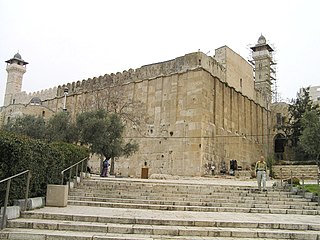 W
WHerodian architecture is a style of classical architecture characteristic of the numerous building projects undertaken during the reign of Herod the Great, the Roman client king of Judea. Herod undertook many colossal building projects, most famously his reconstruction of the Temple in Jerusalem. Many of his structures were built upon comparable, previous Hasmonean buildings and most of his have, in their turn, vanished as well.
 W
WThe Herodian Tetrarchy was formed following the death of Herod the Great in 4 BCE, when his kingdom was divided between his sons Herod Archelaus as ethnarch, Herod Antipas and Philip as tetrarchs in inheritance, while Herod's sister Salome I briefly ruled a toparchy of Jamnia. Upon the deposition of Herod Archelaus in 6 CE, his territories were transformed into a Roman province. With the death of Salome I in 10 CE, her domain was also incorporated into the province. However, other parts of the Herodian Tetrarchy continued to function under Herodians. Thus, Philip the Tetrarch ruled Batanea, with Trachonitis, as well as Auranitis until 34 CE, while Herod Antipas ruled Galilee and Perea until 39 CE. The last notable Herodian ruler with some level of independence was Agrippa I, who was even granted the Judea province, though with his death in 44 CE, the provincial status of Judea was restored for good.
 W
WHerodias was a princess of the Herodian dynasty of Judaea during the time of the Roman Empire. Historical accounts connect her with John the Baptist's execution.
 W
WHerod's Palace at Jerusalem was built in the last quarter of the 1st century BC by Herod I the Great, King of Judea from 37 BC to 4 BC. It was the second most important building in Jerusalem, after the Temple itself, in Herod's day and was situated at the northwestern wall of the Upper City of Jerusalem. Herod lived in it as a principal residence, but not permanently, as he owned other palace-fortresses, notably at Masada, Herodium and Caesarea Maritima. Nothing remains of the Jerusalem Palace today except for portions of the surrounding wall-and-tower complex, much altered and generally known as "the Citadel". The site of the former palace is now occupied by the Tower of David Museum, a police station, and a former Turkish barracks/prison known as the Kishle.
 W
WJulia Iotapa, or simply Iotapa, daughter of King Antiochus III of Commagene, was Queen of Commagene, consort of her King brother Antiochus IV.
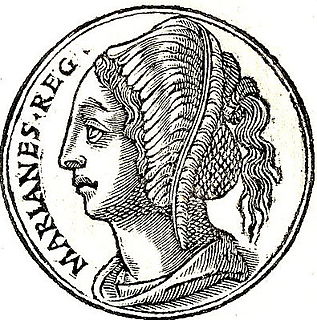 W
WMariamne I, also called Mariamne the Hasmonean, was a Hasmonean princess and the second wife of Herod the Great. She was known for her great beauty, as was her brother Aristobulus III. Herod's fear of his rivals, the Hasmoneans, led him to execute all of the prominent members of the family, including Mariamne.
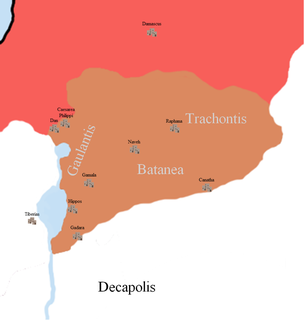 W
WPhilip the Tetrarch, sometimes called Herod Philip II by modern writers, son of Herod the Great and his fifth wife, Cleopatra of Jerusalem, ruled over the northeast part of his father's kingdom from 4 BCE until his death in 34 CE. Philip II was born c. 26 BCE. He was a half-brother of Herod Antipas and Herod Archelaus and should not be confused with Herod II, whom some writers call Herod Philip I.
 W
WPlancia Magna was a prominent woman of Perga in the Roman province of Lycia et Pamphylia who lived in the 1st and 2nd centuries. During her life she was not only a high priestess, but a member of the decurio and a benefactress to the city, funding the restoration of the main city gates between the years AD 119 and 120.
 W
WMarcus Antonius Polemon Pythodoros, also known as Polemon II of Pontus and Polemon of Cilicia, was a prince of the Bosporan, Pontus, Cilicia, and Cappadocia. He served as a Roman Client King of Pontus, Colchis, and Cilicia.
 W
WSalome, the daughter of Herod II and Herodias, granddaughter of Herod the Great and stepdaughter of Herod Antipas, is known from the New Testament, where she is not named, and from an account by Flavius Josephus. In the New Testament, the stepdaughter of Herod Antipas demands and receives the head of John the Baptist. According to Josephus, she was first married to her uncle Philip the Tetrarch, after whose death, she married her cousin Aristobulus of Chalcis, thus becoming queen of Chalcis and Armenia Minor.
 W
WSalome I was the sister of Herod the Great and the mother of Berenice by her husband Costobarus, governor of Idumea. She was a nominal queen regnant of the toparchy of Iamnia, Azotus, Phasaelis from 4 BCE.
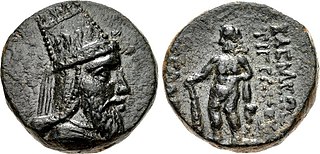 W
WTigranes V, also known as Tigran V was a Herodian Prince who ruled as a Roman Client King of Armenia from 6 AD to 12 AD.
 W
WTigranes VI, also known as Tigran VI or by his Roman name Gaius Julius Tigranes was a Herodian Prince and served as a Roman Client King of Armenia in the 1st century.